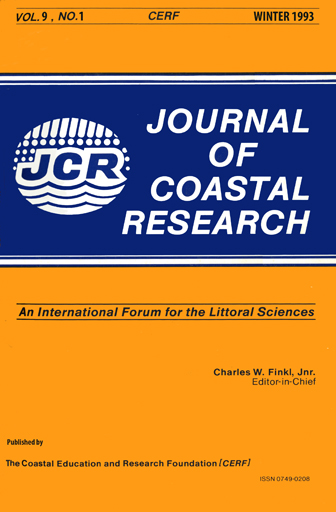Beach Profile Modification and Sediment Transport by Ice: An Overlooked Process on Lake Michigan
Keywords:
Coastal erosion, coastal processes, ice rafting, coastal ice, lake ice, beach protectionAbstract
In the winters of 1989 and 1990 field studies of ice zonation, ice sediment content, coastal profile adjustments, sediment entrainment by ice, and ice rafting were carried out along the coast of southern Lake Michigan, quantifying the effect of lake ice on coastal processes and sediment transport. Coastal lake ice includes a belt of mobile brash and slush ice and a stable nearshore-ice complex (NIC). The NIC consists of an icefoot and a sequence of ice ridges founded on offshore bars with intervening ice lagoons. This complex can be developed and partly, or completely, destroyed several times during a single winter. Multiple winter coastal profiles illustrate both erosion and deposition consistent with displacement of wave energy from the shoreface to the ice-ridge face. Sediment concentrations indicate that the NIC and the belt of brash and slush contains 180 to 280 t (113 to 175 m3) of sand per kilometer of coast. This static sediment load is roughly equivalent to the average amount of sand eroded from the bluffs and to the amount accumulating in the deep lake basin each year. Sediment is being rafted alongshore in the mobile brash and slush at rates of 10 to 30 cm/sec. Applying conservative estimates of sediment loads to the drifting ice suggests that 0.35 to 2.75 x 103t/day could be transported alongshore and around obstacles such as groins. The processes associated with the development, maintenance and destruction of the NIC do not protect the coast. Rather, shoreface erosion is enhanced as severe winter wave energy is displaced from the beach to the shoreface and coastal ice entrains and transports sediment alongshore and offshore.


